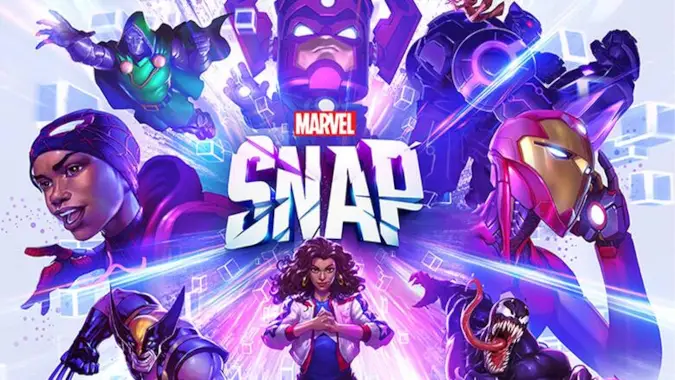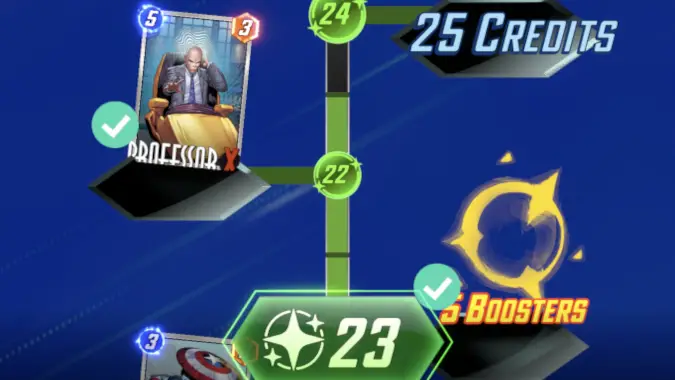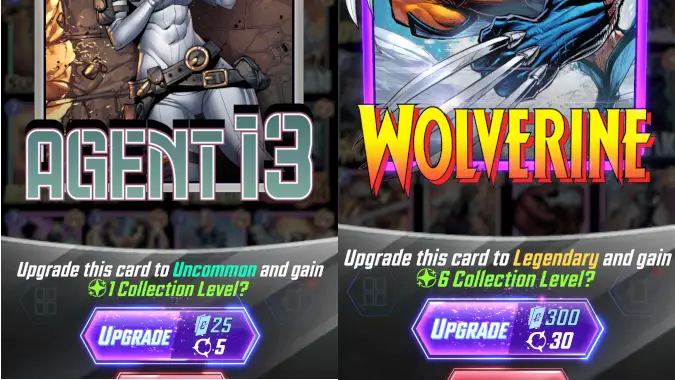Marvel Snap encourages players to break away from the meta and use every card in their collection

Playing Marvel Snap, you can tell it has the advantage of being a second-generation card game. Ex-Hearthstone developers Ben Brode and the team from Second Dinner took lessons learned from games like Hearthstone and even Magic: the Gathering, then solved the problems we typically see in the genre in new and interesting ways. One of the problems Snap has tried to overcome is the way a meta develops in these games, meaning everyone plays the same “best” cards and decks, which can make gameplay tiresome.
There are two aspects to any collectible card game: building your deck and piloting that deck. Once you’ve built your deck by packing it with your very best card combos, you have to pilot it to victory: making those crucial turn-by-turn decisions of which card to play, and in the case of Snap what Location to play them on. In typical card games, players quickly learn and share what the best cards and combination of cards are, building hard-to-beat decks. Streamers on YouTube and Twitch show off these powerful decks and before you can say “Ben’s your uncle” (love you Uncle Ben!) those “best” decks get played over and over. Soon these meta decks are all you see in play.
But Marvel Snap isn’t your typical card game, and to advance you’ll find yourself playing every card in your collection.

Marvel Snap puts counter pressure on meta cards
The way Snap awards new cards encourages putting a card or two in your deck that you haven’t used much before. Opening a pack and getting a new card is typically one of the most exciting moments in any card game. Depending on the cards you get, new decks and strategies open to you. But Snap forgoes this particular gameplay mechanic, because there are no random card packs. Instead, you earn new cards by increasing your Collection Level, and you can only increase your Collection Level by upgrading your cards Poor to Legendary.
Brode stayed true to his roots. The border color changes using the same color scheme as World of Warcaft. Poor is grey, Uncommon is green, Rare is blue and so on. Instead of Artifact, Snap has Ultra Legendary. If there’s an upgrade level beyond that, I haven’t seen it.
Neither the stats nor the effect of the card changes when you upgrade: only the border color of the card, which follows the same color scheme as World of Warcaft (Poor is grey, Uncommon is green, Rare is blue and so on). But upgrading cards is crucial, because it’s the way to get Collections Levels. The better the upgrade, the more Collection Levels you get. At various Collection Levels, you get a new card.
You need two currencies to upgrade a card: Boosters and Credits. Credits come from doing dailies and completing tasks on the two rewards tracks (Collection Levels and Season Pass), and they can also be bought with the real money. Boosters come from both rewards tracks, but the main way you get them is from your matches.
After each match, you get some card-specific boosters for one of the twelve cards in your deck, which can be used to upgrade that card. They remind me of Mercenary Coins from Hearthstone Mercenaries. For example, you need America Chavez Boosters to upgrade your America Chavez card.

Each time you upgrade a card, the next upgrade on that card costs more Boosters and Credits. If you keep playing the same cards over over, you’ll soon have a deck full of Epic and Legendary (or even Ultra Legendary) cards. These cards will be very expensive to upgrade. As you see above, upgrading my Wolverine card to Legendary costs 300 Credits — if you wanted to buy 300 Credits with real money, it would cost about $10. Because these higher level upgrades are so pricy, running the same deck over and over means your progress toward your next Collection — and thus your next new card — will grind to halt.
If you put some Poor or Common cards in your deck, they will be cheaper to upgrade, and upgrading them with give you Collection Levels which will help build out your card collection. Replacing single card with a Poor, or Common card, especially one with a similar effect to the one it replaces, won’t typically change your win percentage by more than a couple of percentage points. Remember the “quality” of the card only affects the color of its border — the stats and effect are unchanged, so you aren’t putting yourself at a disadvantage by using lower quality cards.
The system is more carrot than stick. You feel like you get rewarded for putting one of your Poor or Uncommon cards into your deck, not like you’re being punished for not using those cards. I even made a deck of all Poor and Uncommon cards at the beginning of the season when I was near my rank floor — it was the best way to progress.
Time will tell how the meta shapes up for Marvel Snap. Will this system keep the game fluid, or will the end game be dominated by the same types of meta decks we see in other card games? For now, it’s an interesting system that makes Snap feel different. What do you think of Snap’s system to encourage players to play “off-meta” cards?
Please consider supporting our Patreon!
Join the Discussion
Blizzard Watch is a safe space for all readers. By leaving comments on this site you agree to follow our commenting and community guidelines.
 @honorshammer
@honorshammer



